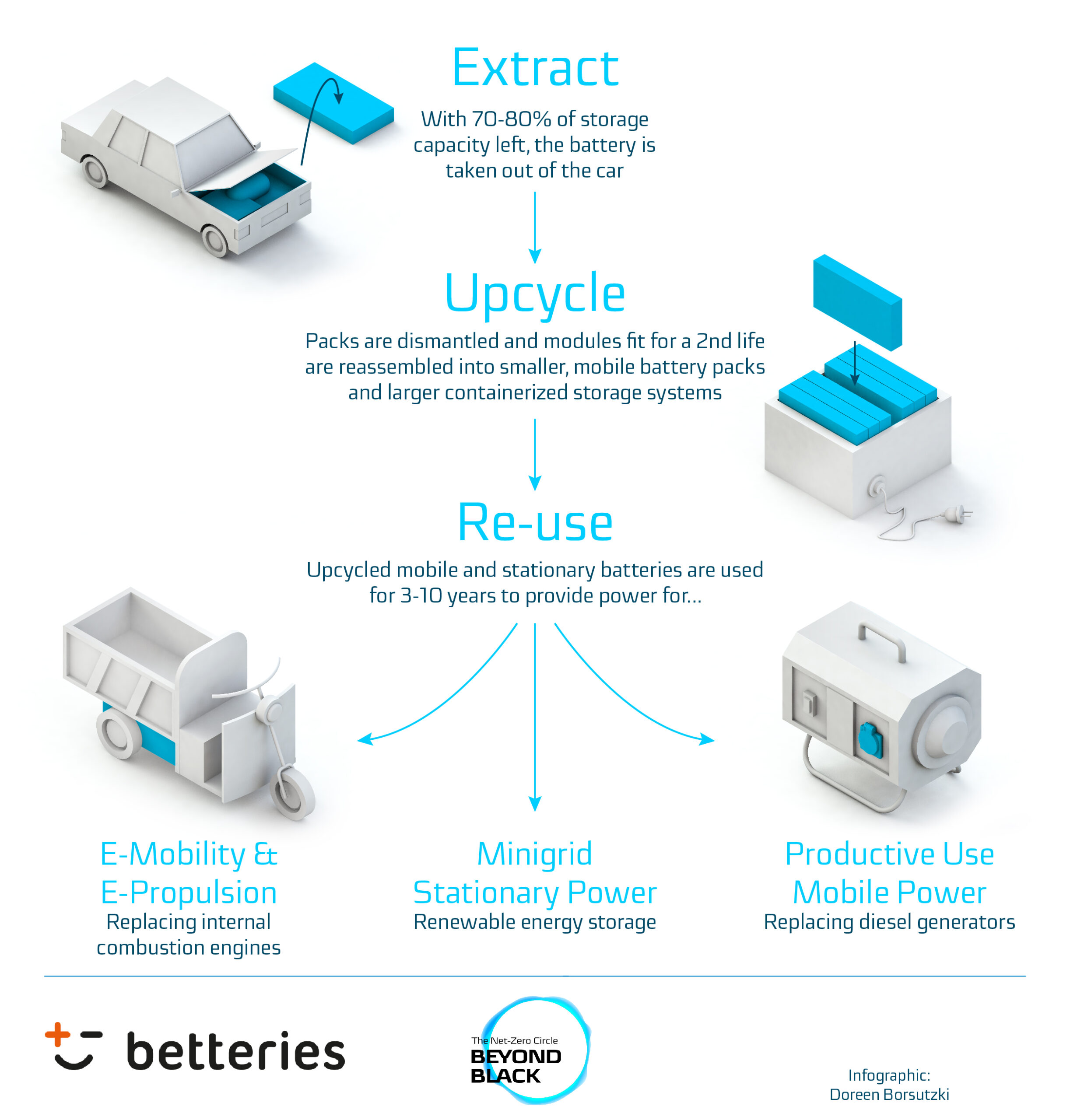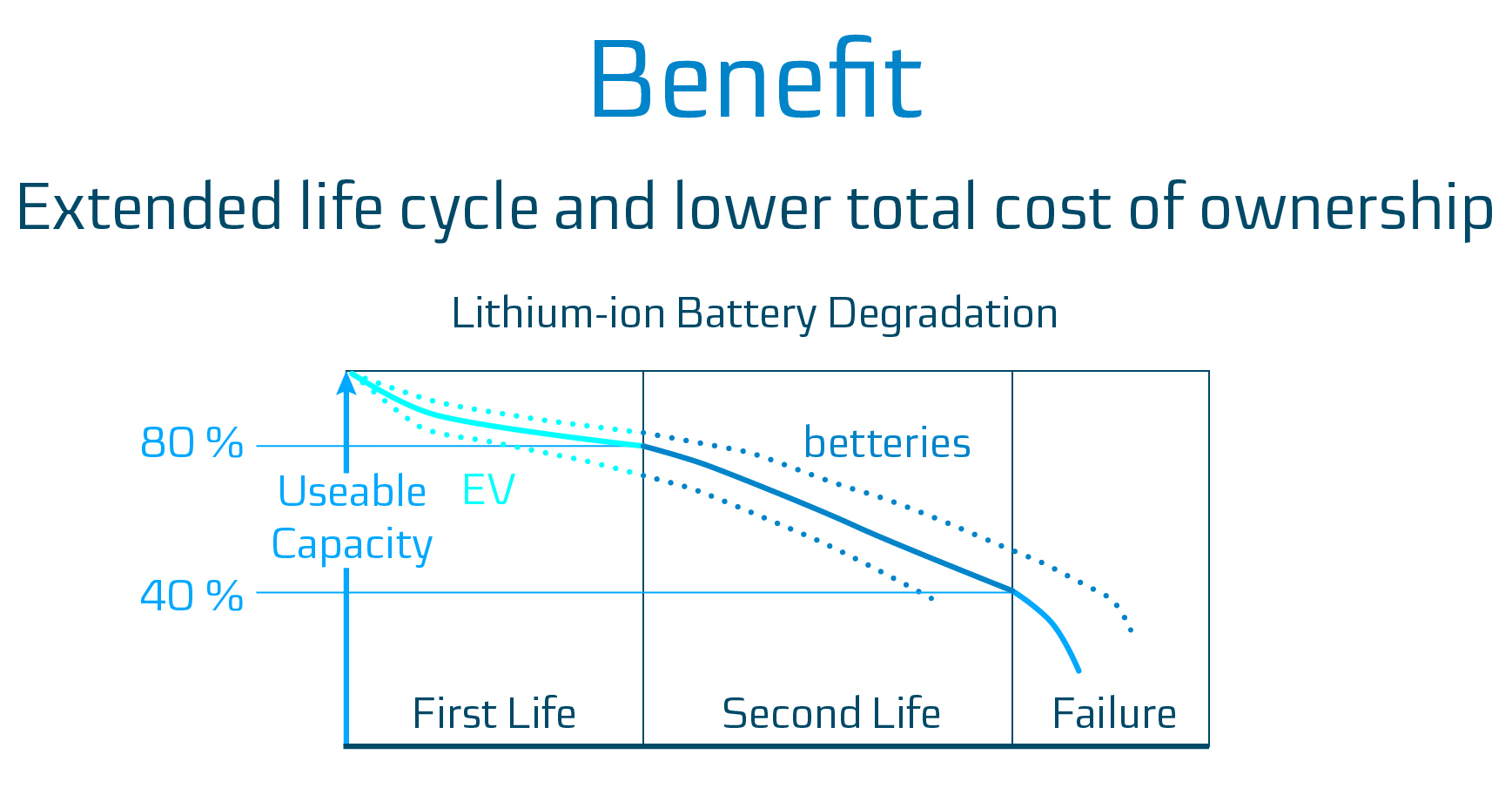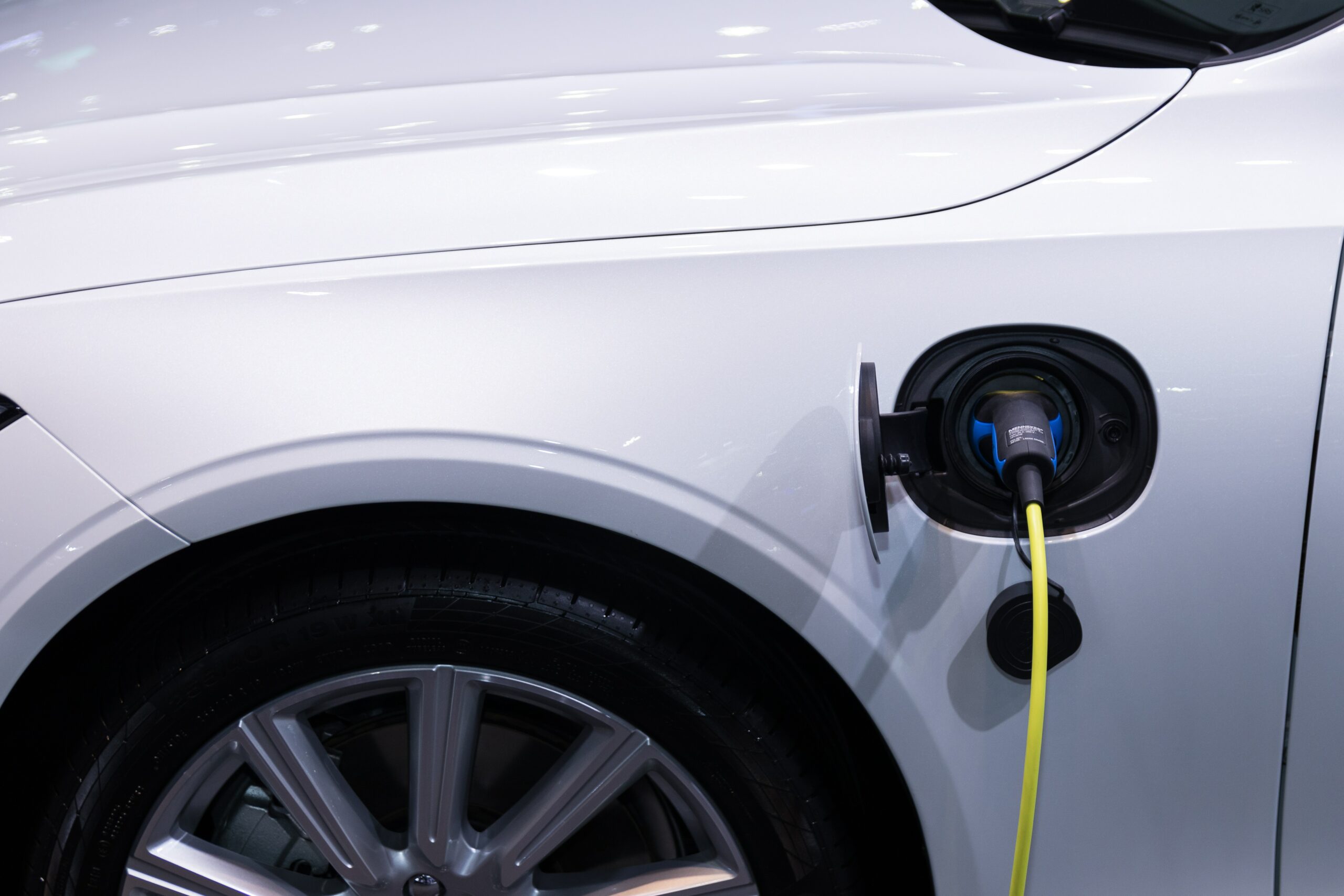In Short:
- Betteries has found a way to enhance the life-cycle of electric car batteries.
- They extract batteries from electric cars (which usually still have a storage capacity of 70% – 80%), dismantle and reassemble them.
- The upcycled batteries can then be reused for multiple other purposes, like e-mobility, mini-grid stationary power, and mobile power storage.
- The extension of the batteries’ life-cycle is a revolutionary way of decreasing the CO2 footprint of electric cars and reduce global greenhouse gas emissions.
A Tsunami of Batteries
Electric car skeptics had a field day in 2010 when the first Nissan Leaf hit the market. It had looks only Al Gore could love, a max range of 100 miles with the air conditioner and radio off and a top speed of 92 mph. Unfortunately for the critics, 2010 was their high-water mark. EVs have since become virtually indistinguishable from their gas-powered counterparts in looks and performance, while range anxiety has been allayed thanks to improvements in battery technology and charging infrastructure.
A whopping 500,000 Leafs were sold as of 2020 and global EVs sales (including plug-in hybrids) topped 3 million last year. Demand is set to skyrocket in the next decade, with Bloomberg estimating that sales will hit 26 million in 2030 and 54 million by 2040. This will be a boon for the planet as the International Council on Clean Transportation (ICCT) estimates that EVs produce up to 50% fewer emissions over their lifetime than conventional cars.
However, there is a danger that EVs may not be able to live up to their full potential as carbon-neutral transportation. Manufacturing an electric car is energy intensive and actually creates more CO2 emissions than building a regular car due to the process of sourcing and producing lithium-ion batteries. What’s more, the impact EVs have on the environment can be somewhat blunted if they’re charged using electricity from non-renewable sources. The latter will be solved by transitioning the world’s power grids to renewable energy, while the former can be addressed more immediately by extending the life of batteries through upcycling.
Upcycling is more than just a nice idea: Proposed regulations could soon make it mandatory in the European Union. EV batteries are prime targets for upcycling as they are typically decommissioned from their 1st life when the EV starts to fall short of its promised range despite the battery still holding 70% to 80% of their original charge. However, the upcycling challenge is that these batteries are made up of hundreds of lithium-ion battery cells that all have aged differently and like in a link chain, the weakest element typically defines the capability of the entire system.
Ironing out these differences is key to upcycling EV batteries at scale, but automakers have so far failed to hit on a solution. Fortunately, they may not have to thanks to the hardware and software currently being developed by the Berlin-based startup betteries.

Starting a Second Life
Electric cars aren’t powered by one massive battery but by a series of smaller batteries, or “battery modules,” and betteries bundles these modules together in groups of seven to create portable power packs. These power packs provide an even flow of energy thanks to an IoT-enabled battery management system (BMS) developed by betteries and its partners that is optimized for 2nd life battery applications.
Instead of pulling energy from all cells and modules simultaneously, the BMS activates these with higher capacities first and taps into weaker ones as soon as the differences in capacity have leveled out. The batteries can be remotely monitored and updated, and the connected cloud platform uses machine learning algorithms to avoid breakdowns by predicting when maintenance will be needed.
betteries’ power packs range in size from 3kWh to 12kWh and offer fast-charging capabilities, making them an ideal replacement for gas and diesel generators as well as an eco-friendly source of power for small vehicles (think e-boats and rickshaws). betteries has also a larger containerized storage unit in its making that can be filled with its power packs and used to store energy for solar, wind or hydro-powered “mini-grids” that provide 15kWh – 150kWh energy to remote locations.

Giving electric car batteries a long and productive second life has the potential to reduce global greenhouse gas emissions in a major way. Transportation contributes about one-fifth of the world’s CO2 emissions, and road travel makes up a third of those emissions (or 8.3% of global emissions). What’s more, it initiates a feedback loop that encourages automakers to build more electric vehicles by creating a demand for decommissioned electric car batteries.
Extantia and Betteries
At Extantia, we invest in companies that can significantly contribute to climate change mitigation. We believe it is important that our portfolio companies have the potential to move the needle and significantly reduce emissions. Therefore, we set the bar high – 0.5% of global emissions -and conduct a careful calculation of the “carbon math” before we invest.
We believe betteries has the potential to do just that and become a “gigacorn” in the process. Founder Rainer Hoenig is a veteran of both the power and jet engine manufacturing industries, while co-founder Ralf Schroeder has deep tech experience as a leader, founder and investor. While we are bullish on the founding team, what we’re even more excited about is the math.
The ICCT estimates that if battery life is extended, the total CO2 emissions savings per EV would be 22 grams of CO2 per km. If a battery’s first life lasts 150,000 kilometers as the ICCT estimates and we have annual EV sales of 54 million by 2040 as Bloomberg forecasts, battery upcycling could reduce emissions by 178 megatons per year, and that figure would only increase as more electric vehicles hit the road.
We believe in the potential of betteries to reduce global emissions and have invested in the company and its team to help accelerate their go-to-market strategy. We are excited to work with Rainer, Ralf and their team to scale the production and distribution processes and to show automakers that they have a new partner who can help make their electric cars even more environmentally friendly.



